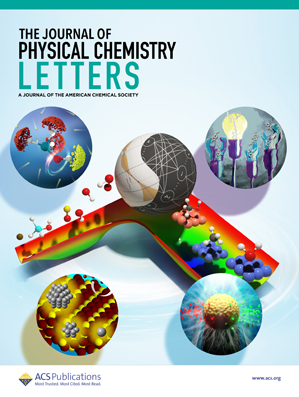Interface Field Engineering of Weakly Alkaline-Treated PEDOT:PSS for Enhanced Performance and Stability of Tin-Based Perovskite Solar Cells.
IF 4.8
2区 化学
Q2 CHEMISTRY, PHYSICAL
引用次数: 0
Abstract
State-of-the-art tin-based perovskite solar cells (TPSCs) commonly use a water-based poly(3,4-ethylenedioxythiophene):poly(styrenesulfonate) (PEDOT:PSS) hole transport layer. However, the strong acidity of PEDOT:PSS, arising from the deprotonation of its -SO3H group in PSS chains due to the low acid dissociation constant (pKa), often degrades tin perovskite films, compromising both the device performance and stability of TPSCs. Here, we present a novel interface engineering strategy using ammonium hydroxide (NH4OH) treated PEDOT:PSS, which effectively neutralizes acidic groups in PSS while simultaneously improving the quality of tin perovskite films due to preferentially oriented crystal growth. Besides, this strategy improves conductivity of the hole transport layer and effectively suppresses charge recombination due to the high-quality perovskite films. As a result, the devices achieve a remarkable power conversion efficiency of 13.3%, alongside significant improvements in stability. Notably, the unencapsulated devices retain 85% of their initial efficiency after approximately 1600 h in N2. Our method marks a significant advancement, integrating enhanced efficiency with improved durability and offering a scalable pathway for the commercialization of tin-based perovskite photovoltaics.弱碱性处理PEDOT:PSS增强锡基钙钛矿太阳能电池性能和稳定性的界面场工程。
最先进的锡基钙钛矿太阳能电池(TPSCs)通常使用水基聚(3,4-乙烯二氧噻吩):聚(苯乙烯磺酸盐)(PEDOT:PSS)空穴传输层。然而,由于PSS链中的-SO3H基团由于较低的酸解常数(pKa)而发生去质子化,PEDOT:PSS的强酸性往往会降解锡钙钛矿薄膜,从而影响TPSCs的器件性能和稳定性。在这里,我们提出了一种新的界面工程策略,使用氢氧化铵(NH4OH)处理PEDOT:PSS,有效地中和PSS中的酸性基团,同时由于优先取向晶体生长而提高了锡钙钛矿薄膜的质量。此外,由于高质量的钙钛矿膜,该策略提高了空穴传输层的导电性,有效地抑制了电荷的复合。因此,该器件实现了13.3%的显着功率转换效率,同时稳定性也得到了显着改善。值得注意的是,未封装的器件在N2中约1600小时后仍保持其初始效率的85%。我们的方法标志着一个重大的进步,将提高的效率与改善的耐用性结合在一起,为锡基钙钛矿光伏电池的商业化提供了一条可扩展的途径。
本文章由计算机程序翻译,如有差异,请以英文原文为准。
求助全文
约1分钟内获得全文
求助全文
来源期刊

The Journal of Physical Chemistry Letters
CHEMISTRY, PHYSICAL-NANOSCIENCE & NANOTECHNOLOGY
CiteScore
9.60
自引率
7.00%
发文量
1519
审稿时长
1.6 months
期刊介绍:
The Journal of Physical Chemistry (JPC) Letters is devoted to reporting new and original experimental and theoretical basic research of interest to physical chemists, biophysical chemists, chemical physicists, physicists, material scientists, and engineers. An important criterion for acceptance is that the paper reports a significant scientific advance and/or physical insight such that rapid publication is essential. Two issues of JPC Letters are published each month.
 求助内容:
求助内容: 应助结果提醒方式:
应助结果提醒方式:


